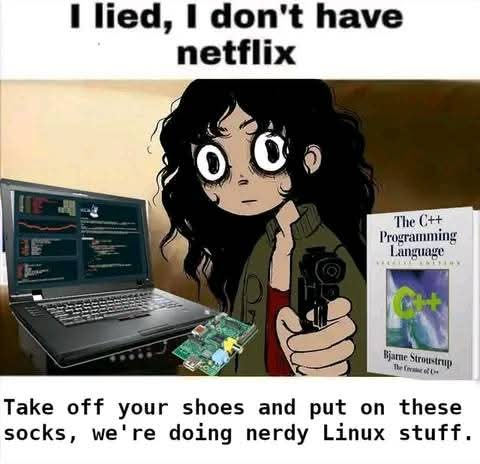this post was submitted on 18 Dec 2024
863 points (97.9% liked)
linuxmemes
21741 readers
590 users here now
Hint: :q!
Sister communities:
Community rules (click to expand)
1. Follow the site-wide rules
- Instance-wide TOS: https://legal.lemmy.world/tos/
- Lemmy code of conduct: https://join-lemmy.org/docs/code_of_conduct.html
2. Be civil
- Understand the difference between a joke and an insult.
- Do not harrass or attack members of the community for any reason.
- Leave remarks of "peasantry" to the PCMR community. If you dislike an OS/service/application, attack the thing you dislike, not the individuals who use it. Some people may not have a choice.
- Bigotry will not be tolerated.
- These rules are somewhat loosened when the subject is a public figure. Still, do not attack their person or incite harrassment.
3. Post Linux-related content
- Including Unix and BSD.
- Non-Linux content is acceptable as long as it makes a reference to Linux. For example, the poorly made mockery of
sudoin Windows. - No porn. Even if you watch it on a Linux machine.
4. No recent reposts
- Everybody uses Arch btw, can't quit Vim, <loves/tolerates/hates> systemd, and wants to interject for a moment. You can stop now.
Please report posts and comments that break these rules!
Important: never execute code or follow advice that you don't understand or can't verify, especially here. The word of the day is credibility. This is a meme community -- even the most helpful comments might just be shitposts that can damage your system. Be aware, be smart, don't fork-bomb your computer.
founded 2 years ago
MODERATORS
you are viewing a single comment's thread
view the rest of the comments
view the rest of the comments

Honestly, I prefer King's book to any other for intro to C programming. K&R is a classic, and is really quite good for diving into some cool tricks (i.e. postfix operation wizardry).
But as a beginner, I can just say that King's book is much more digestible. The author holds your hand a lot more and assumes you only have a basic knowledge of programming and the UNIX command line.
That said, the exercises and simple projects do push you to demonstrate what you learned in each chapter as well as enforcing other Computer Science fundamentals like basic data structures (stacks, queues, linked lists) through demonstrations in the C language.
My plan is to revisit K&R after a few other books in C like Advanced Programming In The Unix Environment, Unix Network Programming, and The Linux Programming Interface. All while referencing Beej's Resources.
I feel like by then I'll hopefully have a more solid grasp on C and can then more aptly appreciate The K&R Book.